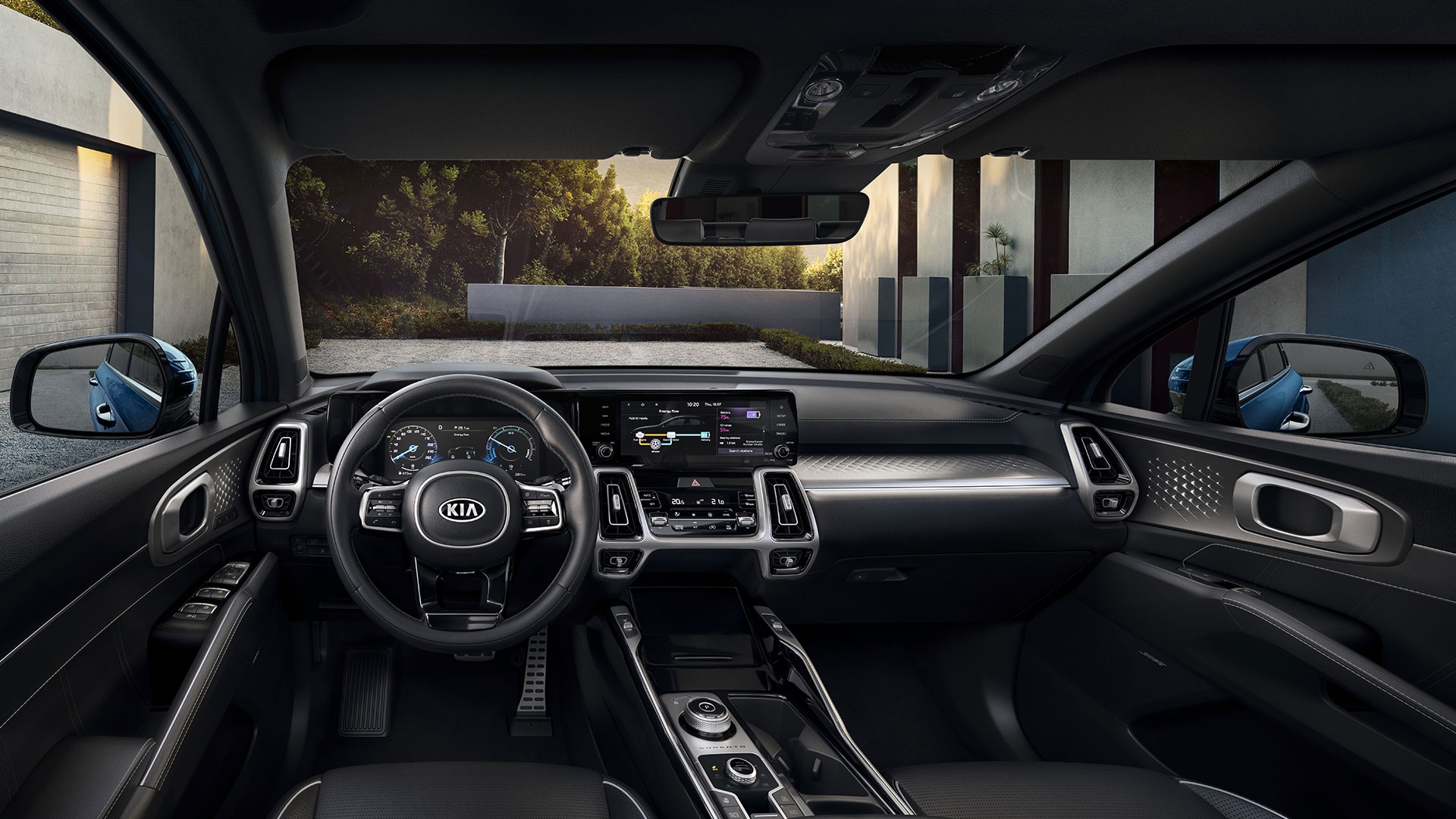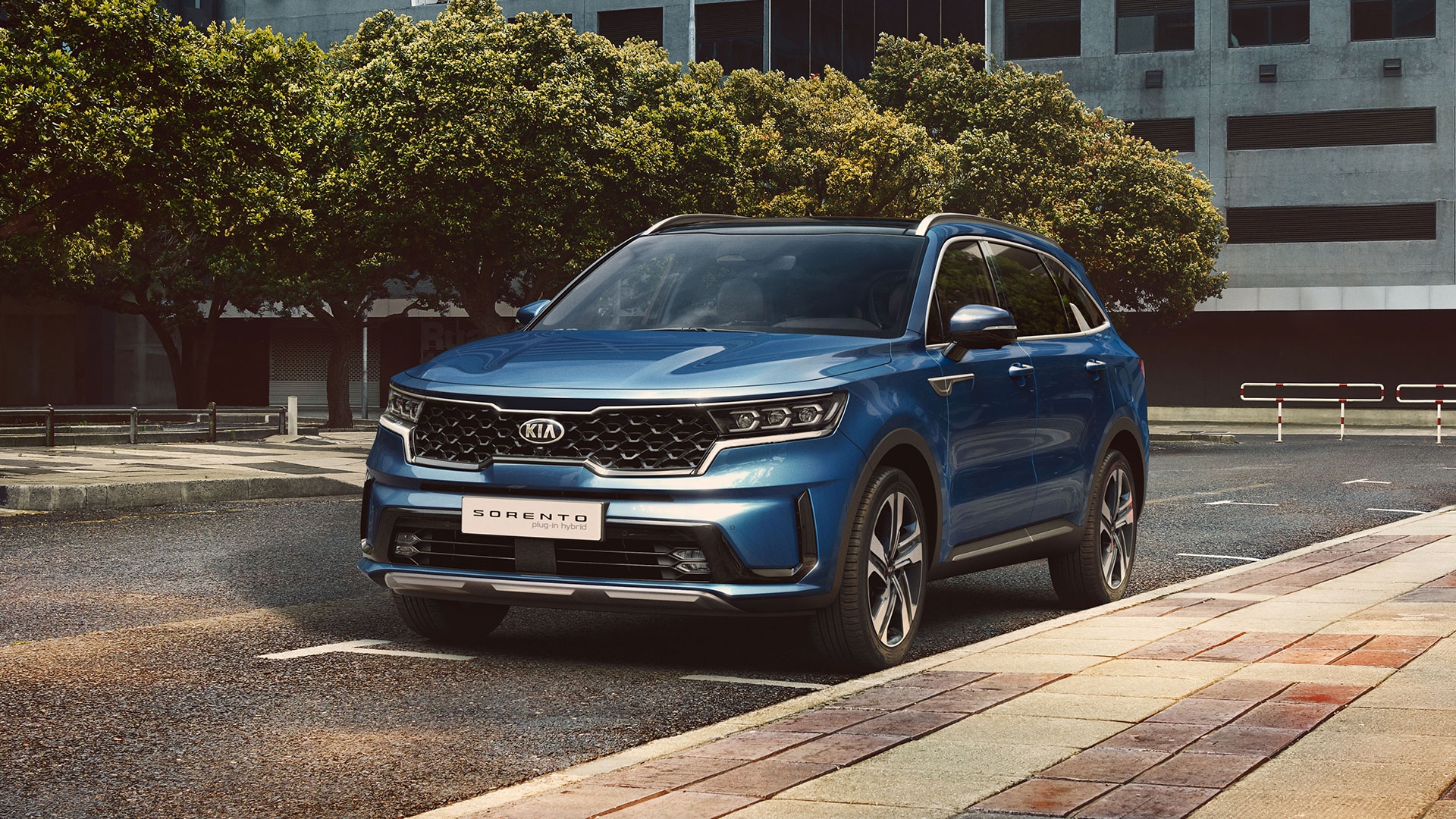In keeping with electrifying times, carmakers have resorted to becoming the automotive version of Oprah — every vehicle in all current model range gets an electric motor and hybrid system. While mainly being the strategy of European carmakers, the Korean’s have followed suit in their electrification efforts if they are ever going to stay in Europe. Kia’s latest addition to the hybrid party has been their flagship SUV, the Sorento, receiving a plug-in hybrid powertrain for the first time. And it is also the brand’s most powerful system to date.
The Sorento features a turbo hybrid powertrain, with a 1.6-litre turbocharged direct-injection four-pot providing 180hp and 265Nm of torque as its primary source of power. Mated to the engine is a 13.8kWh high capacity lithium-ion battery, as well as a 66.9kW electric motor. The combined system output is rated at 265hp and 350Nm of torque, with power being sent to all four wheels via a six-speed automatic transmission.
Kia has not skimped on using the latest available technology on the Sorento. Kia uses its most advanced plug-in hybrid system in the Sorento, utilising the brand’s first independent battery pack water-cooling system that ensures optimal heat management and efficiency for a high-voltage battery. The 1.6-litre turbo engine is from Kia’s ‘Smartstream’ line, featuring Continuously Variable Valve Duration for optimal engine transmission. Its automatic transmission allows power from both the petrol engine and the electric motor to be transmitted in parallel for immediate acceleration.
Although the full EV range has yet to be confirmed, Kia claims the Sorento can propel itself on pure electric for most short drives. This culminates to the most fuel-efficient, lowest emissions Sorento ever.
Its commonly known that hybrid systems take up cabin space, not the case, however, with the new Sorento, all thanks to its new platform. The Sorento’s platform has been designed to accommodate battery packs and electric motors from the start, so cabin and luggage space remain aplenty.
The Sorento Plug-In Hybrid offers generous space for five and seven passengers, the same as its diesel sibling. The Sorento also offers the largest cargo capacity amongst its rivals, 809 litres in five-seat configuration (or 898 litres on Diesel variants). With seven seats though, the carrying capacity was a far less impressive 175 litres.
The interior design is similar to the rest of the range, with the only difference being redesigned graphics on the 12.3-inch digital instrument cluster to show the battery’s state of charge and the flow of power. The central 10.25-inch infotainment display now also incorporates new functionality that enables drivers to quickly locate charging points along their route of travel. Beyond that, the interior remains thoughtfully laid-out, finished in high-quality leather and metal inlays on the dash.
The exterior design is far more striking than the interior, projecting a muscular road presence. The wide grille is unapologetically in-your-face, taking up most of the front fascia. The large headlight clusters are intricately designed with three individual clusters, mimicking the headlights found on the gorgeous DS7 Crossback SUV. A bold shoulder line runs from the headlights all the way to the rear taillight cluster. The rear taillight cluster features two individual taillights on each side, with long vertical light strips adding visual height to the rear. The stylised bumper with integrated chrome exhaust tips livens up the back, adding to the SUV’s premium feel.
Kia prides the Sorento being a ‘connected car’, offering Apple CarPlay and Android Auto with seamless smartphone integration. Kia also provides their innovative UVO Connect telematics system, connecting drivers by providing invaluable information such as live traffic information, weather forecast and points on interest via the in-car touchscreen and on their smartphone. Moreover, the Sorento comes with a 12-speaker Bose Surround-Sound system, as well as a 64-colour cabin Mood Lighting that rivals more premium brands like Mercedes-Benz or BMW.
The Sorento provides top-tier safety features consolidated under Kia’s Advanced Driver Assistance Systems (ADAS). Among the systems under the ADAS safety suit include Forward Collision-Avoidance Assist (FCA), Blind-Spot View Monitor (BVM), Surround View Monitor (SVM) and a Navigation-based Smart Cruise Control (SCC).
Rear View Monitor (RVM) and Rear Cross-traffic Collision-Avoidance Assist (RCCA) also incorporate the Sorento’s Safe Exit Assist (SAE) feature that prevents rear doors from opening if the vehicle detects a hazard approaching from the rear, such as a cyclist or another car. The Multi-Collision Brake system enables the Sorento to mitigate the severity of secondary collisions, permanently applying the breaks after the airbags have been deployed from the primary impact.
Korean brands have been improving their product quality with each generation over the past few years. They’ve bridged the gap with more premium European contemporaries, without having to pay premium prices for certain marques. Providing superb drivetrain technologies and top-tier safety features wrapped up in a first-class interior and an equally attractive design, the new Kia Sorento Plug-In Hybrid looks set to be a home run. At the very least, the Sorento gives you more bang for your buck than anything else in the midsize-SUV market on sale.
